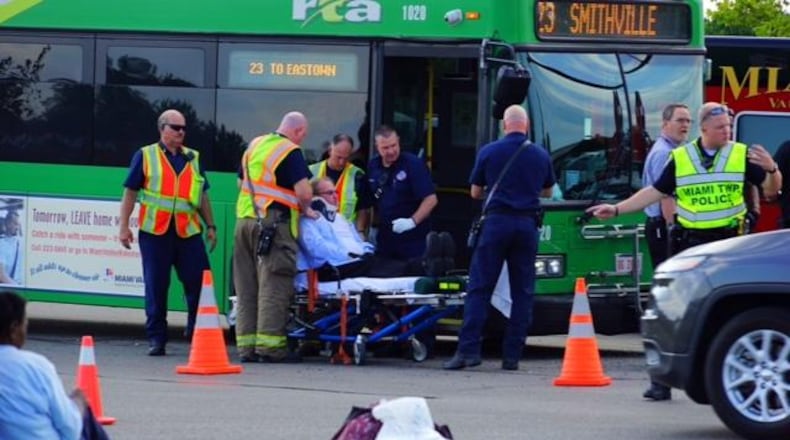Across the region, RTA buses have struck other vehicles, parked cars, utility poles, homes and businesses.
Last year, an RTA driver crashed into a tree in north Dayton after being distracted by a bee. Two people who say they were riding the bus sued the RTA, claiming they suffered severe injuries that resulted in significant medical bills.
WATCH: RTA driver who slammed into parked cars on paid leave
Mark Donaghy, the agency’s CEO, said that RTA transports about 10 million riders each year, and its vehicles travel about 8 million miles, meaning the number of insurance claims is very small compared to the volume of trips and number of people served.
A significant number of claims are invalid because they were filed by people who were not actually injured and are seeking a payday they don’t deserve, or they were injured but the RTA was not at fault, Donaghy said.
The RTA takes steps to make its transit services safer by studying claims and looking at the data to try to identify problem areas and make adjustments, officials said.
Sometimes, bus stops are determined to be near obstructions or sit in highly congested areas, and figuring out an alternative location can solve any issues, officials said.
Most commonly, insurance claims involving the RTA allege that people were injured while boarding or exiting RTA's buses. Across the nation, tens of thousands of older adults are injured each year while boarding and exiting vehicles.
But there have been fewer of those issues because now about two-thirds of RTA’s fleet have low floors and no steps, Donaghy said. Older trolley buses still have stairs, but the next generation trolleys don’t.
Other common claims include side swipes, rear-ending and passenger falls.
The RTA reviews surveillance footage from the buses when it receives a claim to try to determine if it’s valid, Donaghy said.
MORE: 8-year-old expected to make full recovery after RTA bus crash
Here’s a snapshot of some of the types of accident claims that have been submitted to the Greater Dayton RTA since 2013:
Boarding bus: 332 claims
Exiting bus: 294 claims
Side swipe: 178 claims
Fall from seat: 142 claims
Slip/fall related to sudden stop: 121 claims
Auto accident: 102 claims
Slip/fall related to bus acceleration: 61 claims
Wheelchair securement: 48 claims
Struck parked vehicle: 30 claims
Passenger closed in door: 27 claims
Pedestrian/bicyclist collision: 26 claims
Struck pedestrian: 4 claims
On-board fire: 1 claim
About the Author

